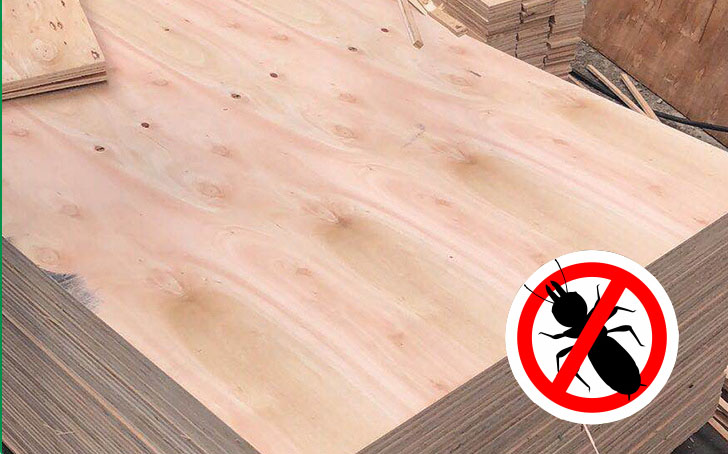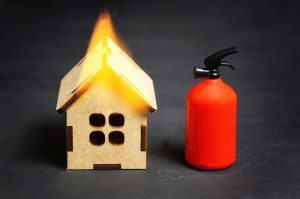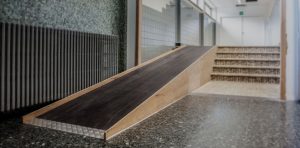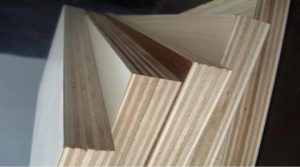Termites are one of the most prevalent pest problems in our country. And you need to protect your home from termites by installing Termite resistant plywood. There are several different types of plywood and timbers available, so here’s a quick guide to each one. Before you buy termite resistant plywood, however, you should first know why they are good for your home. The main reason is that termites have teeth the size of a human fingernail. They find that eating wood is slow and difficult.
Termite-resistant plywood
Termite-resistant plywood is a building material that’s naturally resistant to the insects that cause them to infest wood products. These types of wood can resist fire and moisture damage and are usually used as additional flooring layers. However, this doesn’t mean that termite-resistant plywood is completely termite-proof. In fact, most common types of plywood don’t even resist termite attacks.
Another type of termite-resistant plywood is wood that has undergone pressure treatment. This type of treatment essentially fills the lumber with a chemical compound that acts as a blockade to termites. Since wood that is pressure-treated is the type that comes into contact with the ground, this process makes the wood less attractive to them. Termites aren’t attracted to heartwood, but homeowners can purchase heartwood-grade lumber if they’re interested in avoiding the need for termite-resistant plywood. Although the heartwood of a tree is naturally darker, this kind is less porous than its surrounding timber.
Termites can infest the interior of a home or business, causing significant damage. It’s essential to seek professional advice if you suspect you’ve been a victim of termite activity. Termites can also eat expensive wooden furnishings, converting them into dust that can aggravate respiratory conditions. These bugs usually wreak havoc before you’re aware of their presence. Termites typically enter through wall panelling, ceilings, and external walls. They tend to settle in damp areas and are most active during the monsoon season.
If you want your furniture to last for years, it’s best to buy termite-resistant plywood. While it’s not 100% termite-proof, it’s an excellent choice if you want to avoid expensive repairs. This type of plywood can also resist moisture and rain, ensuring you won’t have to pay for repairs as often. There’s nothing worse than finding out you have a termite infestation and then discovering it’s too late to repair it.
When you buy new construction, check for signs of termite infestation. Termites tend to swarm during March and June, when warm weather precedes a heavy rain. If you see swarmers in your home, they’re probably active and will fly to your windows and doors. You can also try applying borax powder, a substance that’s naturally repellent to termites. The powder is not only an effective termite treatment, but it also helps to keep ants away from your home.
Termite-resistant timber
Although there are several types of plywood, not all of them are naturally termite-resistant. For example, cedar is naturally termite-resistant, as is redwood, but some types are pressure-treated, which makes them resistant to both termites and insects. There are also several types of wood that are naturally termite-resistant, such as greenply plywood, which is made from 100% hard wood and is visually attractive.
Light yellow lumber is a type of termite-resistant plywood. Its characteristic color is pink or red brownish and its strength makes it ideal for furniture. This kind of plywood can be incredibly durable, but you should be aware of its high price. It’s worth investing in this type of plywood, as it will last longer than any other type of wood. And, because it has a combination of wood layers, it can also be fire and moisture-resistant.
Another option is to apply anti-termite chemicals to your raw wood furniture or plywood. Once applied, they should cure for 6 to eight hours before exposing it to water. Alternatively, you can use herbal anti-termite chemicals, which are odourless, eco-friendly, and non-toxic. Make sure to install cross ventilation, and repair any seepage problems. Using wood-based building materials is also recommended for homes in areas with high moisture content, as these can be home to termites.
Chemically treated plywood is another option for plywood, and is often used as a backing board or additional flooring layer for tiling. But, while chemical-treated plywood is considered a superior alternative to normal plywood, it doesn’t offer the same level of termite-resistant qualities. There are different grades of plywood, and some types of termite-proof ones will last much longer than others. You can choose the best option for your home by researching the grade of your plywood.
When choosing a termite-resistant plywood, make sure it is pressure-treated. Other wood types, such as OSB, can also be vulnerable to termite attack unless it is pressure-treated. Also, hardwoods, such as oak, maple, and pine, are a favorite of subterranean termites, but these types won’t do as well. If you choose plywood, make sure to choose a product that is made of termite-resistant wood.
Preventing termites from entering your home
Termites can easily enter your property if you do not take proper measures to prevent them. Cracks, holes and gaps can invite various pests including termites, ants and cockroaches. It is important to regularly inspect your property for these pests so that you can take preventive measures against them. Termite-resistant plywood is an excellent option for preventing these pests.
There are many different methods for preventing termites. One option is to install pressure-treated wood for outdoor projects. This material contains an insecticide and chemical preservative. These chemicals are impeded by pressure from the wood itself. It does not guarantee total protection, but it reduces the risk of an infestation. Whether or not a termite-resistant plywood is right for your project is up to you.
Another option is to use a termite-resistant wood treatment that is effective for both interior and exterior treatments. You can use boric acid and termite-killing sprays to get rid of termites. However, you should remember that good pesticides are not generally available for the public. Unless you are prepared to spend a fortune on an exterminator, it is best to opt for an organic method that works well in your specific situation.
In addition to using termite-resistant plywood, you can also use a variety of other natural methods. There are natural deterrents for termites, such as ladybugs and praying mantises. Similarly, plants that attract termites like geraniums and sunflowers are also good choices. The only disadvantage of using natural remedies is that these methods are not as effective as the latter.
Dampwood and drywood termites will enter your home through small cracks. Cracks and holes in caulk are also common entry points. Termites also like to eat wood that is moist and decaying. They usually enter your house through the ground. When termites find these cracks, they will begin to feed on the wood and leave behind a mud trail.
Termite-resistant materials
If you’re concerned about termites, it’s a good idea to look into buying Termite-resistant plywood. This type of plywood has a high level of resistance to termites and is suitable for many home-building projects, including furniture, sub-flooring, and hoardings. Because of its chemical treatment, Termite-resistant plywood remains relatively stable even under temperature changes. It is also available in a variety of finishes, including a variety of wood veneers, making it the ideal option for many applications.
Termites are extremely dangerous and can ruin the value of expensive wooden furniture and fixtures. In addition to eating your furniture, they produce wood dust that can trigger asthma attacks and allergies. Termites typically destroy a building before you even realize they have a problem, and they generally enter through ceilings, wall panelling, and external walls. Once inside, they generally settle in damp areas and are most active during monsoon season.
Termites prefer damp, soft wood. Many types of wood are termite-resistant, including redwood, which is locally available and moderately durable. Teak wood, however, is one of the best materials for preventing termites from infesting a building. While this type of wood is more expensive, it also provides greater resistance to termites than other types of wood. Termites are attracted to cellulose in wood, and pressure-treated plywood prevents them from finding it.
Another type of termite-resistant plywood is a light yellow lumber. Unlike many other wood types, cork is naturally repellent to termites and inhibits the growth of mold and mildew. It is also aesthetically pleasing, and it has termite-resistant properties. Although termites are attracted to cedar, there are no known types of cedar that are completely termite-proof.
Subterranean termites are the most common type of termite in the U.S., and they tend to live inside residential buildings. These insects are very destructive and can ruin almost any wood structure in a home. While subterranean termites feed on the cellulose content of new wood, they prefer damp and shady wood. If your home contains either type, it’s best to protect it with Termite-resistant plywood.




